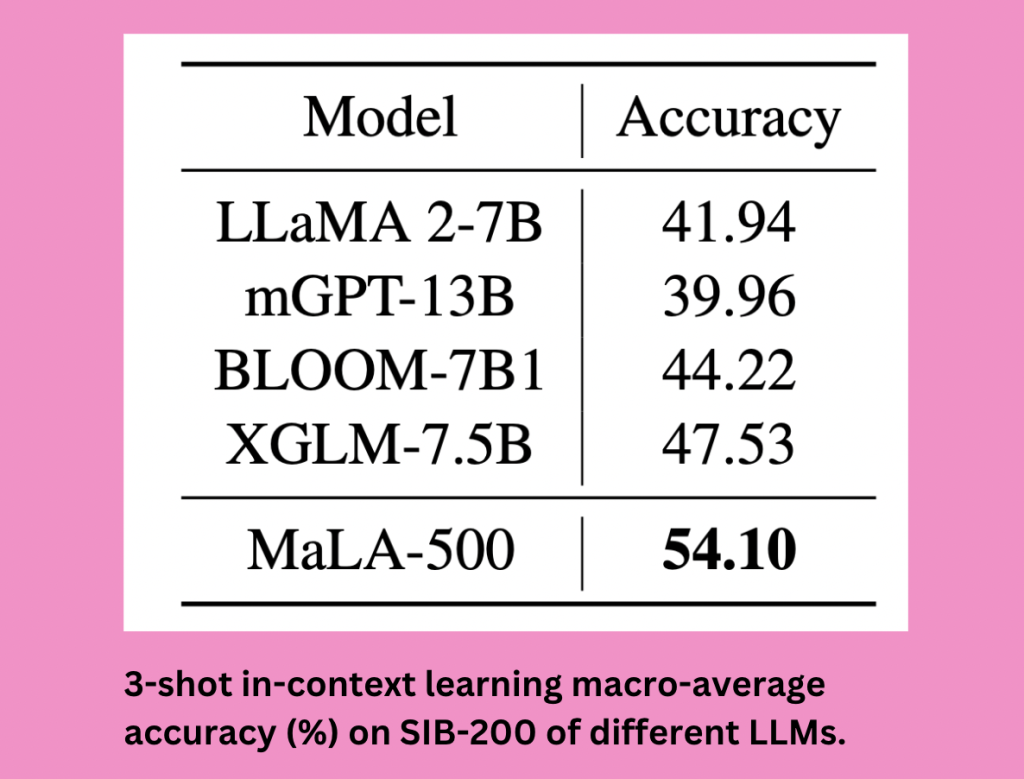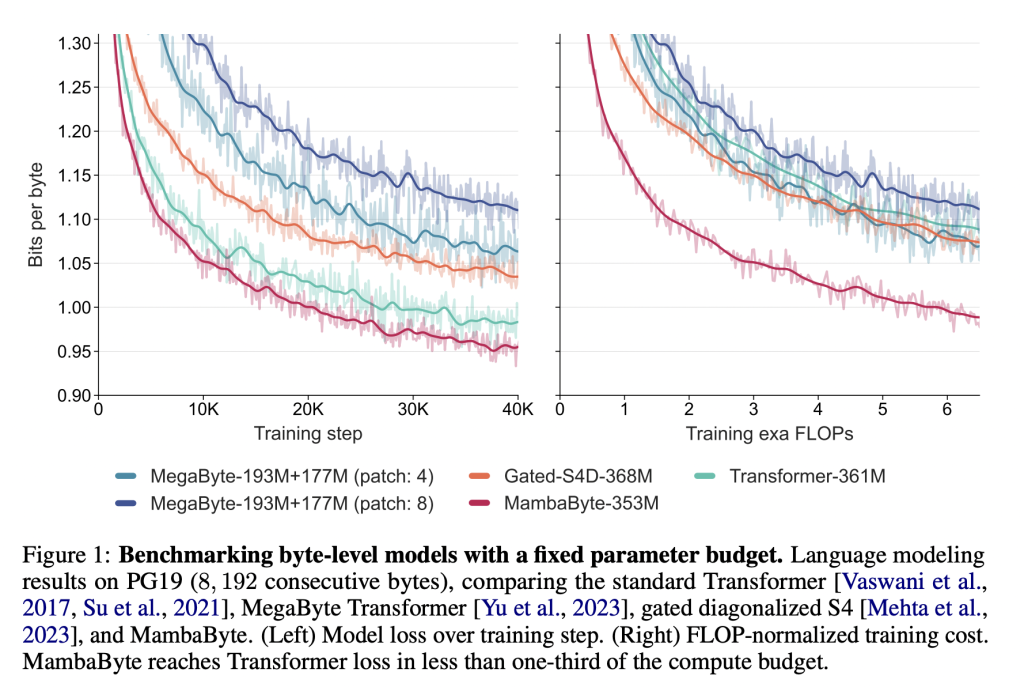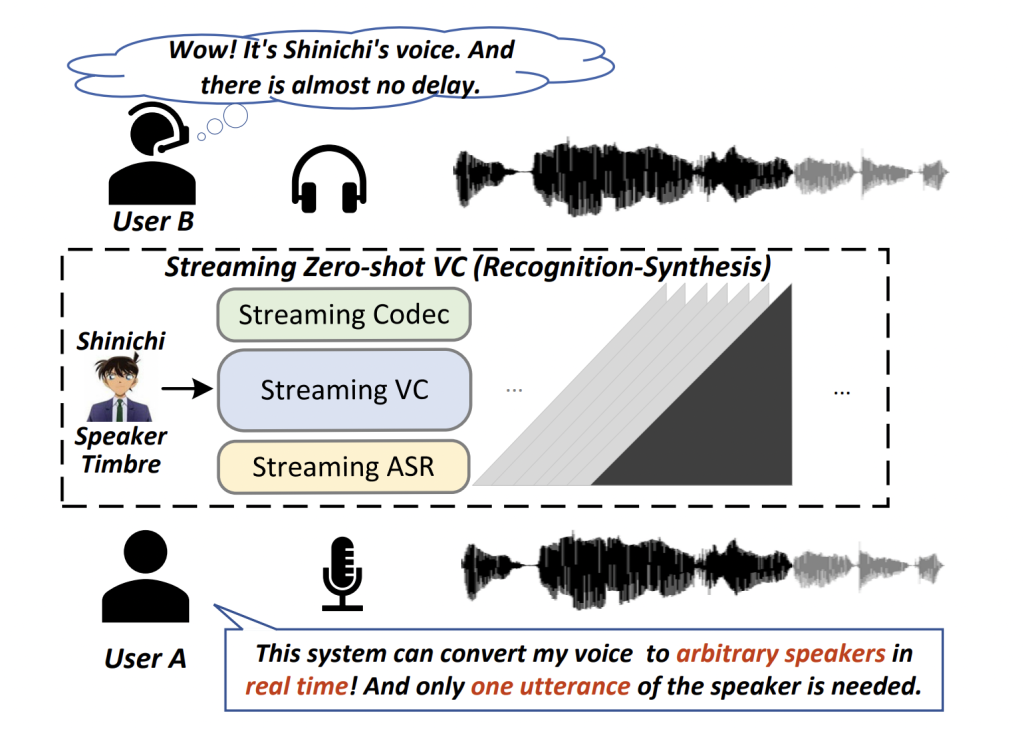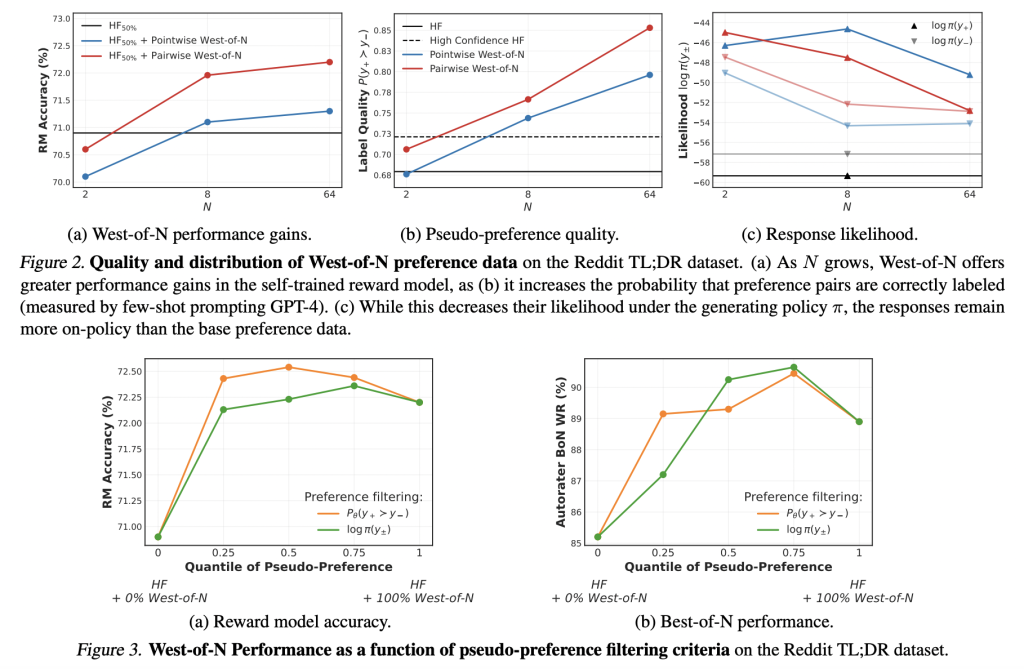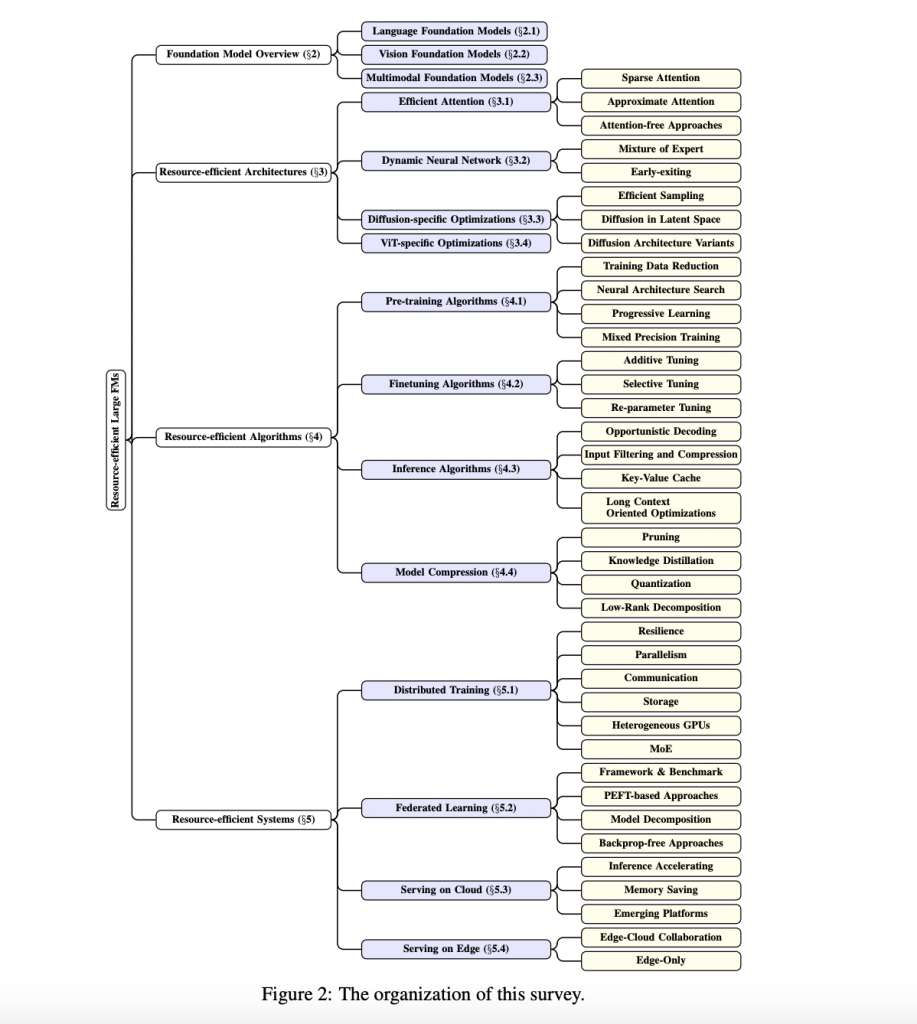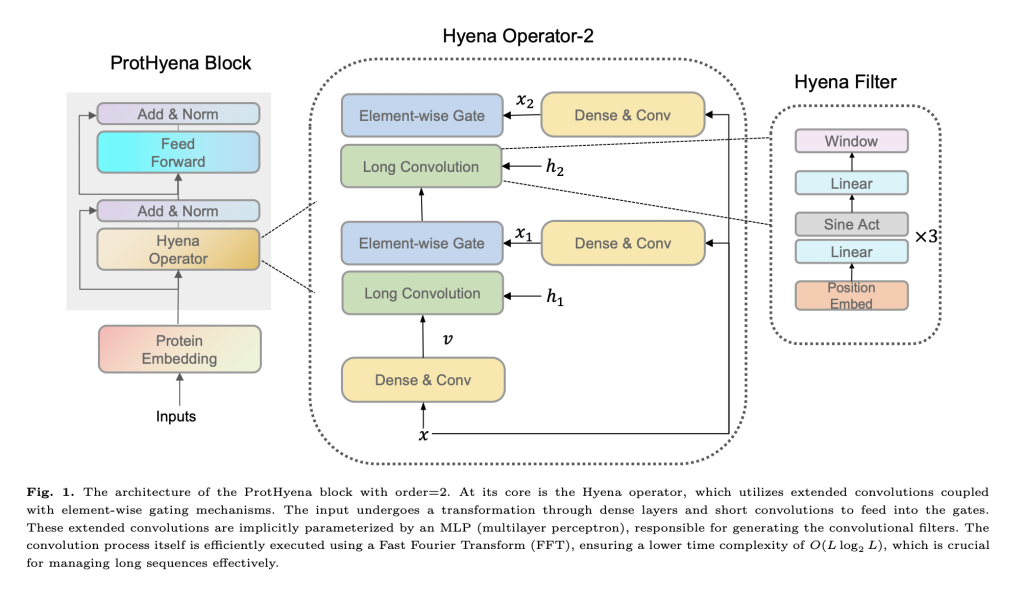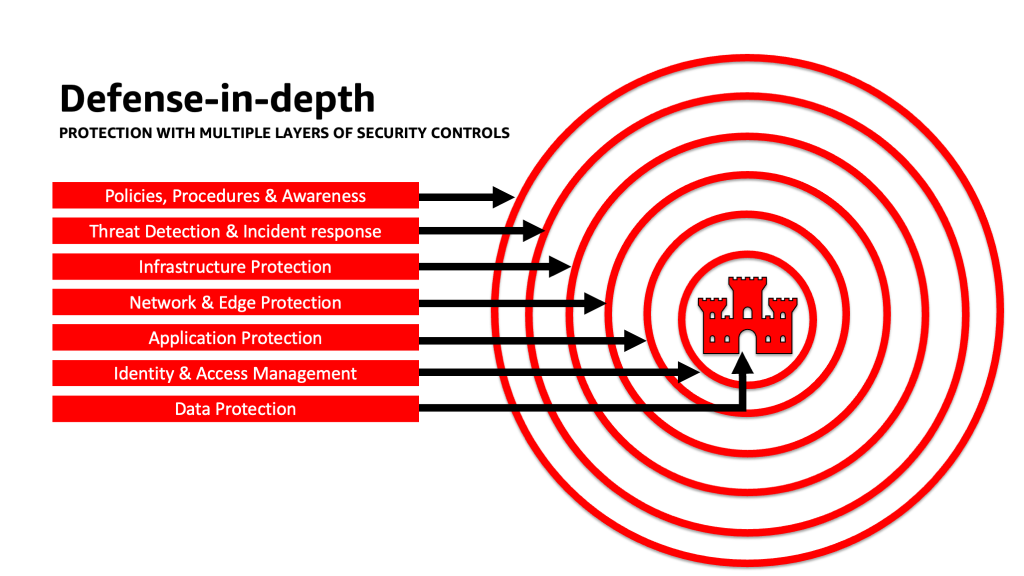B2B marketing tools have made it possible to scale what only recently consisted of face-to-face meetings with business decision-makers. And it’s technology like marketing automation and machine learning that’s made this possible.
How many digital marketers out there have gasped upon your first overview of the budget allocated to conferences and travel? I certainly have, multiple times.
It’s no secret, with a solid strategy in place, the ROI of B2B digital marketing is significantly better in the large majority of cases. And it’s software that’s driving this dramatic shift.
So, what are the best B2B marketing tools to add to your arsenal right now? We’ve broken our 15 favorite tools into the following categories:
Lead Generation Tools
Sales Enablement Tools
Account-Based Marketing (ABM) Software
Event & Webinar Software
Conversion Rate Optimization (CRO) Software
Social Media Automation Software
B2B Content Marketing Software
See Who Is On Your Site Right Now!
Turn anonymous visitors into genuine contacts.
Try it Free, No Credit Card Required
Get The X-Ray Pixel
Lead Generation Tools
The following B2B marketing tools have everything required to convert more prospects into customers. You’ll find everything you need from lead generation to lead enrichment software.
#1. B2B Marketing Tool: Website Visitor ID X-Ray Tool
Website Visitor ID X-Ray pixel allows you to identify anonymous visitors on your website, capturing names, emails, companies, Linkedin profiles, addresses, and more.
By capturing site visitor data, marketing and sales teams can build warm lists, expand and enhance remarketing campaigns, and reach high-intent shoppers in ways they never could.
To install the Website Visitor ID X-Ray Pixel, sign up (for FREE!), go to your dashboard, and navigate to My Automations.
Select + New Automation and get your pixel. We have easy install options for Google Tag Manager, WordPress, and Shopify, or you can install the pixel manually.
[Learn More About Our B2B Website Visitor ID Capabilities]
#2. B2B Marketing Tool: Sales Handy
SalesHandy is a pretty cool email productivity tool that I’ve only recently learned about. And its email platform does a few things that are not only super useful for B2B marketing and sales but are also rare features to find on one platform.
SalesHandy provides recipient engagement data and a nine-stage automated follow-up process.
Some of the cool features I mentioned above consist of
Smart email templates
Email attachment tracking tools
Built-in verification to ensure higher email deliverability rates
Most email marketing tools require a third-party vendor to account for all three of the above features.
Marketers use SalesHandy to their benefit by setting behavior-based auto follow-ups, scheduling their emails at the right time, and more. Furthermore, SalesHandy is another email marketing tool that makes sure marketers stay safe from spam filters.
#3. B2B Marketing Tool: Linked Helper
Put your LinkedIn Sales Navigator account on steroids with LinkedHelper’s many automation tools to build connections, send ‘Inmails’, and generate leads.
By combining LinkedIn Sales Navigator with LinkedHelper, you can:
Acquire thousands of targeted contacts by sending personalized invitations to 2nd & 3rd contacts.
Create an auto-mailing system, auto-responders, and sequenced messages to 1st connections or LinkedIn Group Members.
Automate profile visits & export lead lists to CSV for Google Sheets and MS Excel.
Build targeted mailing lists.
Boost your profile by automating the endorsement of targeted profiles, and receive endorsements in return.
Invite 1st connections to join a LinkedIn Group.
Automatically add your signature to messages, follow or unfollow LinkedIn connections, and withdraw sent pending invitations.
LinkedHelper also has a great lists manager that allows you to build lead generation funnels.
#4. B2B Marketing Tool: Overloop
Overloop is a cloud-based Customer Relationship Management (CRM) solution designed for small to medium-sized businesses. Overloop does a ton of cool things including sales automation, email campaigns, and lead management.
Overloop helps marketers with lead generation in a few ways:
Automated email sequences: Enables sending personalized email campaigns to nurture leads effectively.
Lead scoring: Assesses and ranks leads based on their engagement and potential value.
Integration with marketing platforms: Facilitates seamless data flow from various marketing channels for better lead management.
Real-time analytics: Offers insights into campaign performance and lead behavior for strategic adjustments.
Customizable templates: Provides a range of templates for emails and landing pages to capture leads efficiently.
#5. B2B Marketing Tool: Clearbit
Clearbit has rapidly become one of the most popular B2B marketing tools on the market. It’s a marketing data engine for all of your customer interactions.
The platform can be used to better understand your customers, identify future prospects, and personalize your marketing and sales interactions. It literally cross-references 250+ sources and covers up to 85 unique tags. All marketers need is an email or corporate domain to fill in the rest.
Clearbit has three separate but integrated tools that it’s well known for:
Reveal: Unmask anonymous web traffic to personalize for target accounts
Enrichment: Turn any email or domain into a full person or company profile
Prospector: Discover your ideal accounts and leads with complete contact info
Keep in mind that Clearbit is not a cheap service, and if you don’t know how to use it, you can quickly run up the bill by acquiring too many leads. That’s why you need to use the tool properly, carve out your target audiences, and then harness the platform’s power to consistently fill your sales team’s pipeline with quality leads and data.
[See More B2B Lead Generation Tools]
Sales Enablement Tools
Sales enablement provides marketers with essential resources, analytics, and automation capabilities to enhance sales performance and streamline collaboration between sales and marketing teams.
#6. B2B Marketing Tool: Chilipiper
Chili Piper is a scheduling software that streamlines the process of booking meetings. It also helps convert leads into customers through its advanced appointment setting and calendar management features.
Chili Piper enhances sales enablement for marketers with its targeted features:
Automated Scheduling: Simplifies meeting organization by automatically syncing with sales calendars, reducing back-and-forth communication.
Instant Lead Qualification: Streamlines the process of evaluating leads, ensuring quick follow-up with high-potential prospects.
Integration with CRM and Marketing Tools: Seamlessly connects with existing CRM systems and marketing tools for unified data management and workflow optimization.
#7. B2B Marketing Tool: Seismic
Seismic is a sales enablement platform that focuses on sales productivity through personalized content and insights at scale.
Seismic is great for marketers when it comes to sales enablement for a few reasons:
Content Optimization: Provides tools for creating, managing, and personalizing sales content, ensuring relevance and impact.
Analytics and Insights: Offers detailed analytics on content usage and effectiveness, enabling data-driven decisions and strategies.
Integration with Sales and Marketing Platforms: Seamlessly integrates with various sales and marketing tools, enhancing collaboration and efficiency across teams.
#8. B2B Marketing Tool: Consumer Directory
The Customers.ai intent-based Consumer Directory can help you not only enrich leads data but also build your Facebook retargeting list with customers who fit your ICP.
Consumer Directory assists marketers in sales enablement by offering focused functionalities including:
Targeted Consumer Profiles: Detailed and segmented consumer profiles to help marketers tailor their strategies and messages effectively.
Behavior Insights: Insights into consumer behavior and preferences, enabling more personalized and effective marketing campaigns.
Easy Integration: Seamlessly integrates with various marketing and sales tools, enhancing data-driven decision-making and campaign management.
#9. B2B Marketing Tool: Gong.io
Gong.io is an AI-powered revenue intelligence platform that analyzes customer interactions across calls, emails, and meetings to provide actionable insights for improving sales strategies and performance.
Gong.io boosts sales enablement for marketers through:
Conversation Intelligence: Analyzes sales calls and meetings to provide insights on customer interactions and feedback.
Deal Execution Insights: Offers real-time data on sales processes, helping identify best practices and areas for improvement.
Integration with CRM and Sales Tools: Seamlessly integrates with existing CRM and sales platforms, ensuring a unified approach to sales strategy and execution.
AI-Powered Advertising
How to Unlock AI and Lead Capture Tech for 10X Return on Ad Spend
HOSTED BY
Larry Kim
Founder and CEO, Customers.ai
Free Webinar: Watch Now
Account-Based Marketing (ABM)
Account-based marketing is fundamentally different from traditional marketing and often requires a completely different tech stack. ABM focuses on quality, and aims to produce fewer new opportunities for sales, while also closing more deals and larger accounts.
The following tools will prove to be a strong addition to kick your ABM strategy into gear.
#10. B2B Marketing Tool: Cloze
When you’re prospecting dozens or even hundreds of highly targeted relationships, it’s easy to lose track of conversations, even when it’s a promising lead.
Cloze is a relationship management tool built for ABM (account-based marketing) that allows you to see everything about your contacts in one place.
Whether it’s email, phone calls, notes, scheduled meetings, follow-up notifications, or customer profiles, Cloze has you covered.
Cloze learns who’s important to you and reminds you of the things you’re most likely to forget about. Additionally, Cloze prompts you to keep in touch with your contacts and will provide you the proper context to do so automatically.
Cloze automatically keeps track of your email, phone calls, meetings, documents, Evernote, LinkedIn, Facebook, Twitter, and dozens of other services.
And it’s all organized for you by contact, company, meeting, etc.
Cloze even continuously grabs all the email signatures in your inbox in order to make sure your contacts are always up-to-date.
#11. B2B Marketing Tool: Metadata.io
Metadata.io is an AI-powered demand generation platform that helps to optimize ABM campaigns across paid media at scale.
Although Metadata.io isn’t “cheap” software by any means, it’s a solid option for SMBs that want the capabilities of a Terminus or Demandbase at a cheaper price point.
To use Metadata.io, you’ll first need to connect the tools in your marketing tech stack that hold significant data. For example, you’ll want to connect your CRM along with your social media accounts.
Once you’ve connected your apps, you can discover and visualize your ideal customer profiles based on your data and use them to create lists of target accounts and personas.
After discovering your ideal customer profiles and creating lists of target accounts to go after, let Metadata’s AI operator execute campaigns for you.
All you need to do is drag-and-drop your marketing creative (images, headlines), content assets (e.g. eBooks, whitepapers), and the audience segments you created in the platform and hit ‘Launch’ to execute hundreds of campaigns at once.
Finally, after running your campaigns through Metadata.io, the platform will enrich leads before syncing them with your CRM. Then use reports and your KPIs dashboards to monitor performance based on pipeline generated, target-account information, existing pipeline impact, and more.
#12. B2B Marketing Tool: Builtwith
BuiltWith is a handy tool and browser extension that can be used to tell you what technology is running on a company’s website.
BuiltWith is great for ABM due to its comprehensive web technology tracking capabilities:
Technology Profiling: Identifies the technologies used by target accounts, enabling personalized and informed outreach strategies.
Market Analysis: Provides insights into technology trends and usage in specific industries, helping tailor ABM campaigns to the target audience.
Lead Generation and Qualification: Offers detailed tech stack data for lead qualification, ensuring marketers focus on high-potential accounts with relevant needs.
#13. B2B Marketing Tool: UberFlip
Uberflip is an account-based marketing tool used to drive pipeline, revenue, and retention through personalized content experiences.
The key to Uberflip is the content experiences it creates:
Personalized Content Hubs: Tailored content destinations for each account, boosting engagement and relevance.
Content Insights: Analytics on how target accounts interact with content, informing strategy and content optimization.
Seamless Integration with ABM Tools: Integrates with popular ABM and marketing platforms, ensuring a cohesive and efficient campaign execution.
[See More Account Based Marketing Tools]
Event and Webinar Software
With the dramatic uptick in virtual summits and online events over the past few years, B2B marketing tools for events and webinars have reached peak importance.
#13. B2B Marketing Tool: Bizzabo
Bizzabo is a holistic platform that provides your team with all the tools they need to create rewarding events, while surfacing insights to help your events grow both on and offline.
With Bizzabo, you can:
Fully orchestrate your visitor to attendee experience with enriched and stunning forms, multiple ticket types.
Build a branded event website with an editor that’s integrated with your event registration software and event app.
Send email invites and promotional campaigns that drive interest and registrations with the help of personalized content.
Increase audience engagement via push notifications, one-on-one networking, interactive agendas, and live polling all work together both in and outside the mobile event app.
Give your sponsors unique opportunities, including custom splash screens, special offers, automated push notification shout-outs, sponsorship tiers, and the data to accurately measure sponsor ROI.
Bizzabo claims to be different from the competition because their platform has advanced personalization capabilities, account-based marketing specific feature sets, and is “the only event success software on the market.”
#15. B2B Marketing Tool: Everwebinar
If you’re looking for an affordable webinar solution that’s fairly simple to use and will save you tons of time, WebinarJam and EverWebinar working together could be a great solution.
EverWebinar is a great tool to add to your growth marketing strategy because it allows you to create evergreen webinars.
Same as your brand’s most valuable content that you can share multiple times with your audience – known as evergreen content – EverWebinar facilitates the sharing of the same webinar as many times as you’d like.
The best part of the webinar platform is that the audience always feels like they’re watching the live recording.
For example, after you’ve recorded your webinar, you can add comments, questions, live polls, and more. All of which appear to be asked in real-time to every new viewer. This way, it always feels like you’re one of many audience members actively watching and participating, which increases engagement.
Additionally, you can add countdown timers to your website that makes it look like a brand new webinar is about to start in (for example) 10 minutes. Even though it’s a recording that could have made a year ago, interested site visitors will sign-up with urgency thinking they got there just in time.
So, although EverWebinar is somewhat deceitful, once you get good at using the platform, you’ll be able to generate hundreds and possibly thousands of leads over time with just 1 solid recording.
#16. B2B Marketing Tool: Zoom
Zoom allows users to host and broadcast online seminars, offering tools for registration, audience interaction, and comprehensive analytics to manage and evaluate webinar success.
Zoom makes webinars easy with:
Interactive Tools: Geatures like polls, Q&A sessions, and chat options to engage audiences and gather feedback.
Customizable Registration: Options for custom registration forms, helping in lead generation and audience segmentation.
Detailed Analytics: Insights on attendee engagement, participation metrics, and post-webinar data for performance assessment and improvement.
#17. B2B Marketing Tool: StreamYard
Streamyard is a live streaming studio that enables users to host interactive webinars and broadcasts. It also has easy-to-use tools for multi-platform streaming, audience engagement, and custom branding.
Streamyard supports B2B marketers in conducting effective webinars through its user-friendly features:
Multi-Platform Broadcasting: Enables streaming across multiple social media platforms simultaneously, expanding audience reach.
Custom Branding Options: Allows users to add custom logos, overlays, and backgrounds to create a professional and branded webinar experience.
Interactive Engagement Tools: Provides features such as on-screen comments and guest participation, enhancing audience interaction and engagement.
Convert Website Visitors into Real Contacts!
Identify who is visiting your site with name, email and more. Get 500 contacts for free!
Please enable JavaScript in your browser to complete this form.Website / URL *Grade my website
Conversion Rate Optimization (CRO) Software
Next, we’re going to cover some B2B marketing tools that are great for CRO.
Capitalizing on your website traffic is extremely important due to the increased difficulty to convert and/or capture contact details on a B2B website as opposed to a B2C website.
Use these tools to increase your conversion rates and save lots of time in the process.
#18. B2B Marketing Tool: Unbounce
Unbounce is one of the most popular landing page builders for B2B marketers with no coding skills required.
When you’re running highly-targeted campaigns, such as account-based marketing campaigns, you need your entire funnel to be tailored to its audience. This is why custom-built landing pages are so important.
Think about it…
For example, let’s say you click on an ad that’s promoting chatbots for marketing agencies and you landed on the Customers.ai homepage. The homepage doesn’t immediately mention marketing agencies, so the chances of that traffic bouncing are higher than if you had landed on a page that says in big bold letters, “The Best Chatbot Platform For Marketing Agencies.”
When you build your marketing funnels, make sure that people find exactly what they were looking for when they landed on your page. Conversion rates are guaranteed to go up, and search engines will reward you for it.
With Unbounce, you can duplicate your most successful landing pages to save time and build high converting pages in bulk. Furthermore, you can A/B test variations of landing pages to see which messaging and designs perform best.
Lastly, Unbounce’s Conversion Intelligence and Smart Traffic features help to set it apart from the competition.
#19. B2B Marketing Tool: HotJar
Marketers have so much data available to them nowadays that we forget just how much we could learn by watching people explore the website.
Sometimes Google Analytics doesn’t have all the answers. And that’s when heat mapping and screen recording tools like HotJar save the day.
With HotJar, you can dramatically lessen the need to make assumptions when it comes to your UI/UX.
If you want to find out exactly why your website visitors are not converting, use HotJar.
Although HotJar’s heatmaps and conversion funnels are extremely useful, I personally have found most of the platform’s value in the video recordings of visitors on my web pages.
More than once, by watching just 5 or so video recordings each day, I’ve identified opportunities that dramatically increased conversion rates, or found something on the site that was broken, which was costing the company thousands of dollars.
#20. B2B Marketing Tool: Autopilot
Autopilot is all about building a lead generation and lead nurturing process that can then be automated.
It’s a visual marketing automation tool makes it easy to design personalized customer experiences that capture and convert.
Autopilot allows users to:
Customize journeys based on audience behavior.
Build workflows to automatically send messages through multiple channels.
Generate reports about customer journey progress and more.
The platform comes with a drag-and-drop interface that can automate workflows and personalized messages.
Autopilot also includes features such as measuring campaign ROI and optimizing the revenue funnel based on real-time performance. Lastly, Autopilot integrates with other popular platforms such as Salesforce, InsideView, GoodData, Zapier, Slack, and Twilio.
#21. B2B Marketing Tool: Lucky Orange
Lucky Orange is a conversion optimization tool designed to help businesses track and engage with visitors.
Lucky Orange offers real-time insights through features like heatmaps, surveys, session recordings, and conversion funnels, allowing businesses to understand user behavior, identify pain points, and make data-driven improvements that significantly enhance website performance and user experience.
“In the fast-paced world of e-commerce, Lucky Orange is your backstage pass to see how visitors really use your website. Study behavior to remove conversion blockers and take your store to the next level.”– Molly Staats, Director Of Strategic Partnerships at Lucky Orange
Customers.ai for Agencies
Higher retainers, improved ROI, and happier clients.
Book a Demo
Social Media Automation Software
The following content marketing tools can handle your social media management, Facebook ads, keyword research, content creation, search performance analytics, and more.
#22. B2B Marketing Tool: Agorapulse
Agorapulse is an all-in-one social media dashboard that simplifies the understanding of social media metrics. And the platform is particularly great for B2B companies.
You can use AgoraPulse to gain audience insights and capitalize on otherwise missed opportunities with full monitoring and engagement tools for social media.
AgoraPulse has many options to build a pipeline for your content calendar. Additionally, you can store unlimited posts tied to particular themes, and queue them up for publishing.
Reporting and analytics are what AgoraPulse does best.
It’s easy to export reports with key metrics and analysis on engagement and growth, and content reports let you identify posts that achieve the best reach, engagement, and clicks for any given period.
Lastly, you can use AgoraPulse to show your marketing team’s impact on conversions and revenue, as well as encourage more positive engagement with your ads across social channels.
#23. B2B Marketing Tool: Meet Edgar
MeetEdgar is a content recycler that can be used to automate the sharing of all your evergreen content across Facebook, LinkedIn, Twitter, and Instagram.
MeetEdgar streamlines social media management for marketers with:
Content Scheduling: Automates the scheduling and reposting of content across multiple social media platforms, ensuring consistent online presence.
Content Library and Categorization: Maintains an organized library of evergreen content, categorized for easy access and systematic posting.
Performance Analytics: Provides insights into post engagement and reach, helping marketers refine their social media strategies for better results.
#24. B2B Marketing Tool: Social Pilot
SocialPilot is a user-friendly tool for automating and streamlining social media activities, making it easier to schedule posts, manage multiple accounts, and gain insights from social media campaigns.
SocialPilot boosts your social media game with handy tools:
Easy Post Scheduling: Queue up posts for multiple platforms all in one place.
Insightful Analytics: Get a clear view of what’s working and what’s not with your social posts.
Team-Friendly: Makes it a breeze for your whole team to chip in on social media management.
#25. B2B Marketing Tool: Oktopost
Oktopost is a savvy social media tool tailored for B2B marketing, making it easy to handle content scheduling, boost team involvement, and keep track of how well your social strategies are performing.
Oktopost makes social media a breeze for B2B marketers with some cool features:
Easy Posting: Schedule your content across different platforms without a hitch.
Team Power: Get your whole team sharing and amplifying your message.
Analytics that Speak: Dive into clear analytics to see what’s hitting the mark and tweak your game plan.
B2B Content Marketing Software
For B2B marketers, content marketing software is the secret sauce for crafting, tracking, and perfecting content that clicks with business audiences and boosts engagement.
#26. B2B Marketing Tool: Surfer
Surfer is kind of like a GPS for content marketing, guiding you to create SEO-savvy content with tips on keywords, structure, and making your writing more reader-friendly, all to help you climb up those search rankings.
Surfer gives content marketers an edge with its smart, SEO-focused tools:
SEO Content Editor: Offers real-time suggestions for keywords, headings, and structure to boost your content’s search engine appeal.
Content Audit: Quickly analyzes existing pages and provides actionable tips for improvement.
Keyword Research: Delve into keywords, discover what’s trending, and find the sweet spots for your content strategy.
#27. B2B Marketing Tool: Jasper.ai
Jasper.ai is an AI-based tool created to assist content creators, marketers, and ecommerce businesses in crafting high-quality content.
Jasper.ai is a content creator’s dream, jazzing up your marketing with some smart AI tricks:
Quick Content Magic: Whips up quality, original content fast, giving your brain a break.
Tone Tweaker: Easily adjusts to sound just like your brand, whether it’s formal, fun, or somewhere in between.
Content Chameleon: From blog posts to tweets, it switches gears smoothly, keeping your content fresh and engaging.
#28. B2B Marketing Tool: Grammarly
Grammarly is AI-based typing assistant that reviews spelling, grammar, punctuation, clarity, engagement, and more.
Grammarly spices up content marketing with handy tools that keep your writing sharp and engaging:
Error Busting: Sniffs out grammar goofs and style slips, keeping your content smooth and mistake-free.
Tone Matching: Helps you nail the right vibe, whether you’re aiming for friendly, formal, or anything in between.
Originality Check: Keeps your work unique with a plagiarism checker, so you can be sure your content is always fresh.
Making Your B2B Marketing Toolset Work for You
As we leap into 2024, it’s clear that the B2B marketing toolbox is brimming with more gadgets and gizmos than ever before.
From AI wizards like Jasper.ai that sprinkle creative magic on your content, to the analytical acrobats like Grammarly ensuring your prose leaps flawlessly off the page, there’s a tool for every twist and turn in your marketing journey.
So, dear marketers, strap in and gear up – it’s time to turbocharge your strategies, sprinkle some digital dazzle, and write your own success story in the thrilling world of B2B marketing. Let’s make 2024 the year we not only reach for the stars but land amongst them with a toolbox that’s out of this world!
Convert Website Visitors into Real Contacts!
Identify who is visiting your site with name, email and more. Get 500 contacts for free!
Please enable JavaScript in your browser to complete this form.Website / URL *Grade my website
Important Next Steps
See what targeted outbound marketing is all about. Capture and engage your first 500 website visitor leads with Customers.ai X-Ray website visitor identification for free.
Talk and learn about sales outreach automation with other growth enthusiasts. Join Customers.ai Island, our Facebook group of 40K marketers and entrepreneurs who are ready to support you.
Advance your marketing performance with Sales Outreach School, a free tutorial and training area for sales pros and marketers.
B2B Marketing Tool FAQs
Q. What are B2B marketing tools?
B2B marketing tools are specialized software and platforms designed to facilitate marketing efforts in a business-to-business environment. They include a range of solutions like CRM systems, email marketing software, analytics tools, and social media management platforms, catering specifically to the needs of businesses targeting other businesses.
Q. Why are B2B marketing tools important?
B2B marketing tools play a vital role in streamlining marketing campaigns, tracking customer engagement, analyzing market data, and enhancing sales and customer relationships in the B2B sector. Their use leads to more effective marketing strategies, better customer insights, and improved ROI.
Q. How do B2B and B2C marketing tools differ?
B2B marketing tools are tailored for the longer sales cycles and more complex decision-making processes typical in business-to-business transactions. In contrast, B2C marketing tools focus on reaching individual consumers, emphasizing personalization and emotional appeal. B2B tools often include more robust CRM and lead nurturing features.
Q. What are the top B2B marketing tools available today?
Some of the top B2B marketing tools include HubSpot for inbound marketing and CRM, LinkedIn Sales Navigator for social selling, Marketo for marketing automation, Google Analytics for web analytics, and Trello or Asana for project management.
Q. How can B2B marketing tools improve lead generation?
B2B marketing tools enhance lead generation by automating and optimizing marketing processes, enabling targeted content distribution, nurturing leads through personalized campaigns, and providing detailed analytics to understand and improve strategies.
Q. What role does CRM play in B2B marketing?
CRM systems are central in B2B marketing, providing a platform to manage and analyze customer interactions and data throughout the customer lifecycle. They help in segmenting audiences, personalizing communication, tracking sales opportunities, and maintaining customer relationships.
Q. Are there specific B2B marketing tools for small businesses?
Yes, there are B2B marketing tools tailored for small businesses, such as Mailchimp for email marketing, Hootsuite for social media management, and Canva for easy-to-use graphic design. These tools are often more affordable and user-friendly, suitable for smaller scale operations.
Q. How do analytics tools enhance B2B marketing?
Analytics tools in B2B marketing provide insights into market trends, customer behavior, and campaign effectiveness. They help marketers make data-driven decisions, tailor strategies to target audiences, and measure ROI more accurately.
Q. What is the importance of email marketing in B2B strategies?
Email marketing is crucial in B2B strategies for direct communication with prospects and customers. It allows for personalized, value-driven content delivery, nurturing leads, and maintaining ongoing customer engagement.
Q. How can social media be used effectively in B2B marketing?
Social media in B2B marketing is effective for brand building, networking, and content distribution. Platforms like LinkedIn are especially valuable for connecting with industry professionals, sharing thought leadership content, and generating leads.
Q. What are the best practices for using B2B marketing tools?
Best practices include understanding your target audience, integrating various tools for a unified marketing strategy, regularly analyzing data for insights, personalizing content, and staying updated with the latest marketing trends and technologies.
Q. Can B2B marketing tools aid in customer retention?
Yes, B2B marketing tools can significantly aid in customer retention by facilitating personalized communication, enabling regular engagement through automated marketing campaigns, and allowing businesses to quickly respond to customer needs and feedback.
Q. How do content marketing tools benefit B2B marketers?
Content marketing tools help B2B marketers in planning, creating, distributing, and analyzing content. They ensure consistent and relevant content delivery, which is key in establishing authority and engaging a business audience.
Q. What is the role of SEO in B2B marketing?
SEO is crucial in B2B marketing for increasing online visibility, driving organic traffic, and generating leads. Effective SEO strategies involve optimizing content with relevant keywords, improving website structure, and building quality backlinks.
Q. How important is mobile optimization for B2B marketing tools?
Mobile optimization is extremely important as an increasing number of business professionals access information and make decisions on mobile devices. B2B marketing tools need to be mobile-friendly to ensure effective engagement and user experience.
Q. What are the challenges in implementing B2B marketing tools?
Challenges include selecting the right tools that align with business goals, integrating different tools for seamless operation, training team members, and ensuring data security and privacy.
Q. How do B2B marketing tools integrate with other business systems?
B2B marketing tools often integrate with other business systems like CRM, ERP, and e-commerce platforms through APIs or built-in integrations. This ensures seamless data flow and improves efficiency in marketing and sales operations.
Q. What is account-based marketing in the context of B2B?
Account-based marketing (ABM) in B2B focuses on targeting specific high-value accounts rather than the broader market. It involves personalized marketing strategies and content tailored to the needs and characteristics of each targeted account.
Q. How can automation improve B2B marketing efforts?
Automation in B2B marketing improves efficiency by handling repetitive tasks like email campaigns, social media posting, and lead nurturing. It allows marketers to focus on strategy and creative aspects, ensuring more targeted and effective campaigns.
Q. What metrics should be tracked using B2B marketing tools?
Key metrics include lead generation rates, conversion rates, website traffic and engagement, email open and click-through rates, social media engagement, and ROI of marketing campaigns.
Q. How does AI influence B2B marketing tools and strategies?
AI influences B2B marketing by enabling predictive analytics, personalized content recommendations, chatbots for customer service, and automating complex data analysis tasks, leading to more effective and efficient marketing strategies.
Q. What are the trends in B2B marketing tools for 2024?
Emerging trends include increased use of AI and machine learning, greater focus on customer experience, the rise of voice search optimization, more sophisticated data analytics tools, and the growing importance of video marketing.
Q. How do B2B marketing tools handle data privacy and security?
B2B marketing tools handle data privacy and security by complying with regulations like GDPR, using secure data storage and transfer methods, implementing user access controls, and regularly updating their security protocols.
Q. Can B2B marketing tools be customized for niche industries?
Yes, many B2B marketing tools offer customization options to cater to specific industries. This includes specialized templates, industry-specific analytics, and integrations with niche-specific software and databases.
Q. How do B2B marketers measure the ROI of their tools?
ROI of B2B marketing tools is measured by analyzing metrics like lead generation, conversion rates, customer acquisition costs, customer lifetime value, and overall impact on sales and revenue growth.
Q. What is the future of B2B marketing tools?
The future of B2B marketing tools lies in further integration of AI and machine learning, enhanced data analytics capabilities, more personalized and automated marketing solutions, and the increasing use of AR/VR technologies for immersive marketing experiences.
Q. How do B2B marketing tools support international marketing?
B2B marketing tools support international marketing by providing features like multi-language support, global market analytics, localization of content, and the ability to manage diverse marketing campaigns across different regions and cultures.
Q. What are common mistakes to avoid when using B2B marketing tools?
Common mistakes include not fully understanding the tool’s capabilities, failing to integrate tools into the broader marketing strategy, neglecting data analysis, overlooking the importance of mobile optimization, and not regularly updating content and strategies.
Q. How can B2B marketing tools aid in competitor analysis?
B2B marketing tools aid in competitor analysis by tracking competitors’ online activities, analyzing their SEO strategies, monitoring their social media presence, and providing insights into their content and advertising approaches.
Q. How should businesses choose the right B2B marketing tools?
Businesses should choose B2B marketing tools based on their specific marketing goals, the size of their business, budget constraints, the tools’ integration capabilities with existing systems, and the specific features needed for their marketing strategies.
The post 28 B2B Marketing Tools For Companies Ready to Grow in 2024 appeared first on Customers.ai.

